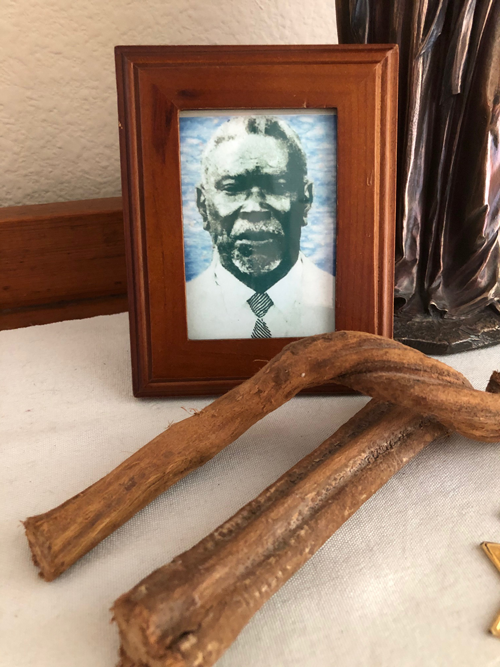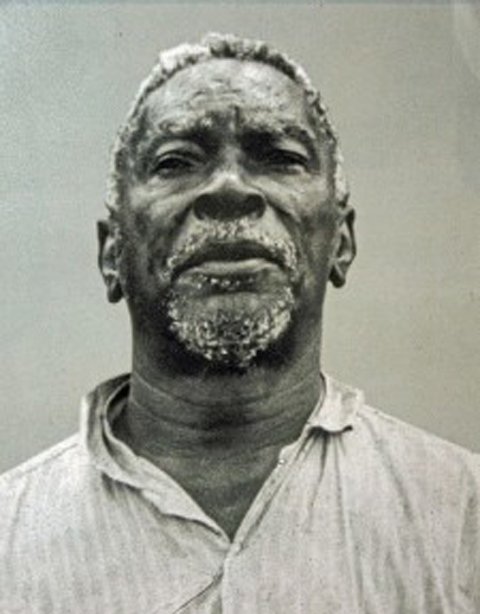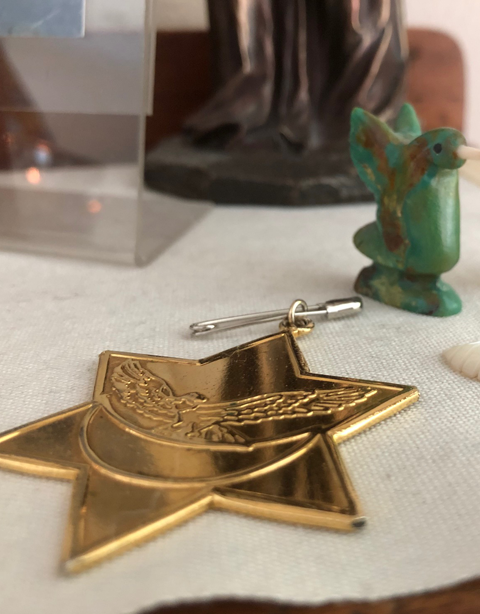I want to begin by saying what an honor and a joy it is to share what I’ve learned over the years about the historical unfolding of the Santo Daime tradition.
I am not an historian. But for the last 15 years (and counting) I have been attempting to learn as much as possible about the Santo Daime religious tradition. This document is my open-ended and heartfelt attempt to share, in a (hopefully!) clear and focused way, my own depiction of the historical development of the Santo Daime tradition with anyone who wants to learn more about this fascinating tradition (especially fellow daimistas.)
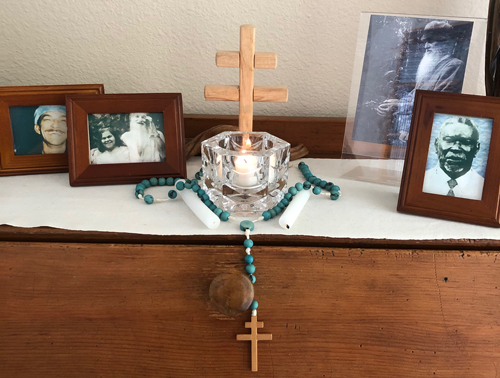
In many ways, this task has been made possible because I have been studying Portuguese for well over a decade now. While not a native speaker, I am relatively fluent in the language. Therefore, over the years (with the invaluable help of my Portuguese tutor) I’ve been able to uncover and to translate many stories about Mestre Irineu and Padrinho Sebastião (the two central figures in the Santo Daime) that are written in Portuguese – stories that most daimistas in North America typically aren’t aware of and/or don’t have any way to access. (I’ve also spent quite a lot of time researching accounts of the historical development of the Santo Daime that are written in English – much of it extremely thoughtful and valuable. Nonetheless, it’s just a fact that the Portuguese texts often give information that simply is not available in English.) Unless noted otherwise, all of the translations of Portuguese texts are my own. I worked hard to make these translations as smoothly flowing as possible, while still remaining faithful to the meaning conveyed by the original Portuguese texts.
I decided to put this historical/biographical information into these two stand-alone documents rather than including it in my book on the Santo Daime (Liquid Light: Ayahuasca Spirituality and the Santo Daime Tradition), not because what I’ve written about Mestre Irineu and Padrinho Sebastião is (by any means!) less important than what I wrote in Liquid Light, but rather because it quickly became clear to me that this bio-historical information had its own rhetorical voice and as such, it needed to exist as an independent document, with its own integrity and narrative arc.
What I’ve written here presents Mestre Irineu and Padrinho Sebastião as complex, intriguing, and deeply gifted human beings, instead of as idealized, seemingly infallible religious figures. And yet (hurrah for complexity!), I hope you noticed that I have consciously chosen to use the honorifics of these two men (i.e., “Mestre”/ “Master and “Padrinho”/ “Godfather”) – and that’s because Mestre Irineu and Padrinho Sebastião are not just historical figures to me. They are that, yes; but on another level, and importantly, they also function, for myself and for many daimistas, as “portals” or “access points” to the divine. I have often discovered that simply by orienting in their “direction” I can more easily feel the Power and the Presence of the divine. Nonetheless, I also believe that it is crucial, even for ardent daimistas, to not (knowingly or unknowingly) turn Mestre Irineu and Padrinho Sebastião into god-beings, to not hoist them onto some pedestal-of-our-own-making, but rather, to recognize that they were fully human, and that they were deeply gifted individuals who profoundly impacted the spiritual trajectory and day-to-day lives of hundreds of followers while they were alive and continue to enliven the spiritual lives of thousands more up until this day.
These documents can be seen then as a tribute, from my heart, to these two deeply spiritual and charismatic human beings who, in my opinion, helped to incarnate genuinely divine energies on this planet and who set in motion and transmitted a transformative energetic matrix, a matrix called “the Doctrine” in the Santo Daime. I have enormous respect, reverence, and gratitude for these two men, and I have a deep and abiding longing to know more about their lives, and the context in which these lives unfolded. It therefore felt (and continues to feel) important for to me to share a hopefully well-polished and vivid encapsulation of their stories with others; to archive, with as much care as possible, at least the broad outlines of what we know at this time about Mestre Irineu and Padrinho Sebastião.
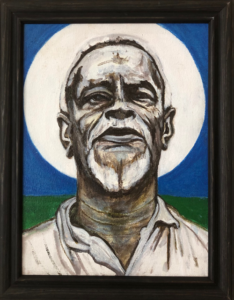
I have worked hard to present, as simply and clearly as I know how, the as-accurate-and-inclusive-as-humanly-possible story about the extremely complex, (and to me deeply fascinating) flowering of the Santo Daime tradition in space and time. These two documents do not claim to somehow offer “the final” authoritative account of “what really happened.” History itself is much too elusive for that. And speaking personally, as I began to study the history of the Santo Daime, I quickly found seemingly contradictory accounts of the same historical/biographical events, and I quickly realized that at times it can be difficult, if not impossible to determine which of these accounts is correct since (all too often) each one of them comes from highly reputable people who were extremely close to Mestre Irineu and/or Padrinho Sebastião. Therefore, what I have often chosen to do is to share, side by side, each of these accounts, even while, on the whole, I also have written “as if” there was one, univocal, completely agreed upon story of Mestre’s life and Padrinho Sebastião’s life. In these two documents, therefore, I hope to both communicate with as much heart and clarity as possible the life story of these two extraordinary individuals, and to acknowledge, at least in passing, the complexities that surround any attempt to construct a completely reliable, universally-agreed-upon account of what actually took place in the (extremely fruitful!) lives of Mestre Irineu and Padrinho Sebastião.
Once again: I am keenly aware that I am not an historian or a biographer – I am simply a well-trained and rather scrupulous academic who has attempted to produce a thoughtful, historically-accurate, balanced account of the lives and historical context of these two men, without claiming to have uncovered any startlingly new historical/biographical data (unlike, for example, Paulo Moreira and Edward MacRae’s simply stunning biography of Mestre Irineu: Eu Venho de Longe – the model for me [I had incorrectly written “do Longe”] for impeccable academic research in this area. I am deeply grateful to these exemplary researchers: much of the information in the section on Mestre’s life is drawn from that text.)
I’ve also had to be very judicious about what information to include and what to leave out. While I have made every attempt to craft this bio/historical narrative in a way that is as vivid and clear as possible, I am also acutely aware of the limits of the interest level of most non-daimistas (and even daimistas!) about such details. It’s important, therefore, to state up front that there is a lot of biographical and historical material that I have consciously chosen to not include, in the interest of focusing on the absolutely essential elements of the development of the Santo Daime religious tradition. However, at least every now and then, I simply could not help myself, and so I have included certain sections that are flagged “FDD” (“For Diehard Daimistas”). These sections, which are highlighted in green, are where I include a few paragraphs about some of the highly specific historical and biographical details that only a diehard, dedicated daimista would relish (“Oh, so that’s what that hymn is referring to!” “Oh, I wondered where the 6-pointed star came from . . .”). Other readers can easily skip past these sections without losing any substantive information.

I also want to note that an enormous amount of basic research remains to be done in order to create a detailed, balanced, and nuanced picture of Padrinho Sebastião. I sincerely hope that some ardent and careful scholar will take on this important task. Unfortunately, however, I will not be the one to do it – due to health issues I will probably not be returning to Brazil for any prolonged period of time, and I will therefore be unable to interview key figures who were close to Padrinho Sebastião. Instead, in “The Historical Development of the Santo Daime, Section Two: The Life and Work of Padrinho Sebastião,” I am basically acting as an archivist, as someone who is interested in presenting what I’ve learned, so far, about Padrinho – drawing some of my material from the handful of (all-too-brief) interviews that I was able to do with people who knew him well, as well as from the relatively sparse number of texts that include biographical information on Padrinho Sebastião. For example, I learned a lot from The Ayahuasca Religion – previously called The Forest of Visions – written by Alex Polari, himself now a revered padrinho in the Santo Daime, as well as from Santo Daime: História do Povo Juramidam, one of the first academic books on the Santo Daime, written by Vera Fróes, an anthropologist (who, to give a sense about how complex this all is, became an early and ardent disciple of Padrinho Sebastião). But by far the best resource that I have found about Padrinho Sebastião’s life is Bença, Padrinho! by Lucio Mortimer, one of Padrinho Sebastião’s closest and influential disciples. There’s simply no better, more comprehensive, account of Padrinho Sebastião’s life.
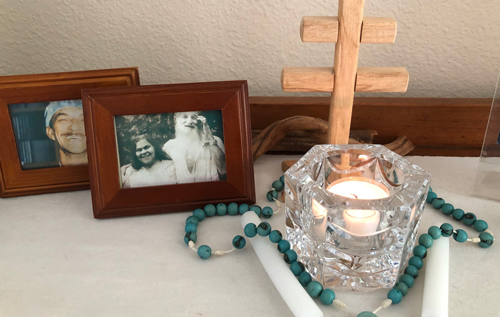
Of course, the fact that it is written by a disciple/close friend of Padrinho might give many scholars reason to question its objectivity and perhaps even reliability. I understand these concerns, but at this point, there is simply no better resource available. And, speaking personally, I have to confess that I am not all that worried about the trustworthiness of the accounts that Lucio provides, in that he will at times discuss, in great detail, certain aspects of Padrinho Sebastião’s life that reveal Padrinho’s all-too-human struggles. (Given the informality of Bença, Padrinho!, I prefer to refer to Lucio Mortimer as “Lucio,” rather than the more formal “Mortimer”). To me, the very fact that Lucio, who loved Padrinho Sebastião so deeply and was, in turn, so deeply loved by him, chose to include these specific events, indicates to me not only their importance in the story of Padrinho Sebastião’s life, but also gives me good reason to trust the veracity of what he shares throughout Bença, Padrinho!. (Of course Lucio, as with any author, inevitably writes from his own unique vantage point and will have chosen what events to emphasize and what to downplay, etc.)
Placing these two bio-historical documents on my website will also (hopefully!) allow me, in the years to come, to amplify this body of historical/biographical knowledge about the Santo Daime tradition, as well as (almost certainly), as I receive feedback from you, to correct any errors that I might have made. I realize that I might well have made honest, well-intentioned mistakes in what I have presented in these pages, and therefore, because I genuinely want this information to be as accurate as is humanly possible, I invite thoughtful, even-handed, and modulated feedback. I very much want this this body of knowledge to accurately reflect the historical/biographical facts of the life and work of these two fascinating individuals. Nonetheless, it is my hope that anyone reading this account will come away recognizing just how difficult it can be to produce a single, univocal, universally-agreed-upon account of what “actually” happened during the lives of Mestre Irineu and Padrinho Sebastião. Therefore, I simply ask that any corrections/additions that you might have to offer be made in a friendly, “just wanting to help” spirit. If you want to reach out to me, please visit the Contact page.

